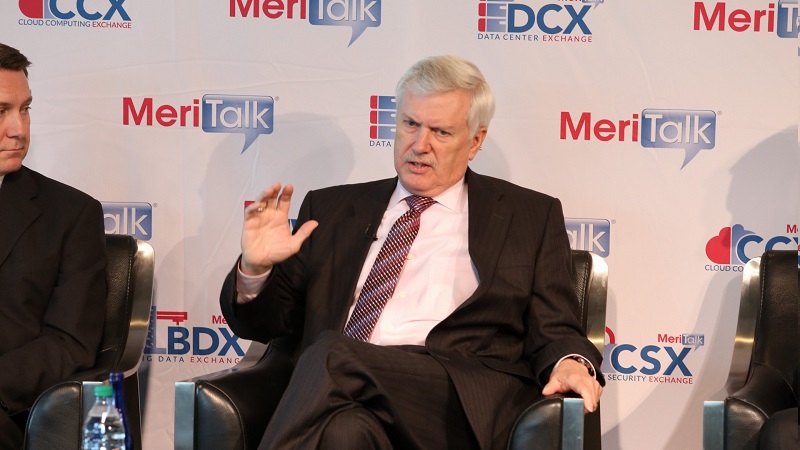
Rod Turk, acting chief information officer at the Department of Commerce, said Thursday at MeriTalk’s 2018 Cloud Computing Brainstorm that the commodification of IT is changing the service delivery model to make shared services an inevitability, and agencies need to shift their thinking to adapt.
Turk outlined his guiding principles for priming agencies for the shared services revolution and provided a set of process questions to aid in implementation.
Change
Agencies must embrace the concept of change as an inevitability, Turk said. With IT underpinning most aspects of our daily life, the shift in service delivery model is going to come with it.
“In terms of a shared services perspective, we are at a tipping point of commodity IT,” he said. “You turn on the lights, the lights come on. You turn on the shower, the water comes on. When you turn on your computer…you expect when you get there in the morning to your job that it’s going to work, that you’re going to get your emails, that they’re going to start flowing, and you can do your work.”
“IT is just embedded in everything we’re doing. So, since it’s a commodity, you don’t think about where the water comes from, where the lights come from. Most people today don’t think about where the emails come from either,” he continued. “So, from a commodity IT perspective, it just makes sense to collapse these things into a unity to get good pricing with quality service. That change is coming.”
Culture
“Change is not easy,” Turk said, noting that agencies need to be prepared for the shift in service delivery by readying the IT workforce for potential changes to their roles.
“We’re talking about taking control of the blinky lights on the servers, the computers and what have you, from each individual component, and centralizing that as a commodity IT,” he said. “Those systems admins who like to put their hands on the blinky lights, feel the power flowing through the wires, they’re not going to be happy that you’re taking that away.”
“The question then is do we have a culture in place that we can change, to make us successful in this area? Otherwise it’ll be extremely difficult with heavy resistance,” he said.
Capability
Turk’s next organizational query, “Do we have the people, the knowledge, the information flow, the change management flow, the training to say we have the capabilities in place and have the ability to make that change?”
“You can go and change, but if you don’t have the people in place to handle the contracts moving to the cloud, to outsourcing arrangements, the terms and conditions in those contracts, and people understanding what they mean and putting this stuff in place? It’s going to be very painful,” he said. “You’ve got to have the capability, the people trained, dare I say a little bit of funding, to be able to make that change work.”
Got It. What Now?
Turk discussed the challenges of adopting shared services at large federated agencies, many of which have a broad range of needs, and said agencies need to ask themselves several questions before they begin to implement.
Turk’s Commerce Department, he noted, includes the National Oceanic and Atmospheric Administration, the Patent and Trademark Office, and deals with data from the U.S. Census and gross domestic product. That’s a vast, horizontal plane of service needs, he said.
“Is shared service a big bang? Do you go in and ask for a lot of money, rip out the old and put in the new in a shared services way? Or do you do it iteratively, take it component by component?” he asked.“The next question you have to ask is: who leads that effort?”
Turk said agencies need to determine whether a separate entity will be established to manage the change processes, or if individual stakeholders will manage their own domain.
“If you don’t know how you’re going to do that at the beginning, you won’t know the path to get to success,” he said.
Finally, Turk said that discussions with contractors and IT solutions providers in the private sector should inform the decision to move certain products or capabilities to a shared service model.
“Many times a contractor will come in and want to talk to me, and I ask him, ‘Where are you in Commerce? Where do you have a contract? Where are you in the Federal government?’” he said. “If there is a preponderance of that tool or service in the department, say five or six instances, we’ll start looking for a strategic sourcing vehicle where we can pull all of that requirement together into unity and create a BPA [blanket purchase agreement] to get volume pricing, discounts, and quality in our services.”
